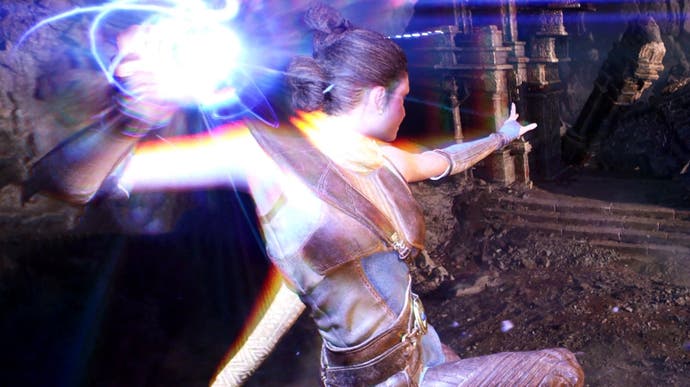Unreal Engine 5: hands-on with Epic's next-gen technology
Plus a closer look at the Valley of the Ancient demo.
Last week, Epic released Unreal Engine 5 for early access, along with a sample demo project - Valley of the Ancient - for developers to explore. Crucial to UE5 are two fundamental new technologies: Nanite, which aims to deliver something akin to 'infinite detail' and Lumen, a state of the art global illumination solution. At its maximum 'epic' settings, the demo targets 1080p at 30 frames per second on PS5 and Xbox Series X. However, another new technology - Temporal Super Resolution (TSR) uses smart upscaling to deliver a convincing 4K presentation. This is cutting-edge stuff and having now spent some time with UE5 on PC, we have some impressions and initial performance numbers.
First of all, there's nothing to stop anybody downloading this initial early access version of UE5, and you can do so for free. However, it is worth bearing in mind that this is far from the complete rendition of the code and key features and optimisations are missing. Over and above the engine download itself, the Valley of the Ancient demo project is a separate 100GB download. This is using raw assets though - a compiled build clocks in at around 25GB. As for the demo content itself, it's pretty simple, and we've got a sample run-through shown operating on an RTX 3080 further on down the page. Essentially, you get some exploration elements allowing you to appreciate the enormous quality of the presentation (and how Nanite can deliver a vast open world) plus a boss battle to show off more interactivity.
The notion of this being a 1080p30 demonstration has raised some eyebrows, but this is UE5 running at epic settings and the Lumen global illumination solution is around twice as heavy on performance as the initial PS5 demo we saw last year (which operated at circa 1400p). Also, object stacking of multiple discrete Nanite meshes to create the world also presents additional overhead. However, TSR really delivers an impressive upscaling solution - not quite as clean and crisp at a native 4K output, but certainly comparable, and far beyond actual 1080p native. There has been some conjecture that this new demo is a multi-platform 'downgrade' compared to last year's PS5 demo, but this has been shot down by Epic's engineering fellow (graphics) Brian Karis, who has confirmed in a live stream that the last demo runs just fine on PCs and Xbox Series X too.
So, what to make of this hands-on opportunity? Put simply, Nanite works. It allows you to bring the camera as close as you want to any in-world object and the detail level is stunning - limited only by the level of detail as the object was imported into UE5 itself. However, there can be disparity in quality if various assets have different levels of geometric or texture density, and if they're displayed in close proximity. I think the real accomplishment with Nanite isn't necessarily the sheer level of detail, but more the continuity in delivering that detail across the board with no LOD pop-in issues. Meanwhile, I've not spent a lot of time looking at Lumen as this technology is still maturing, but you are getting impressive light bounce effects and there are more observations on its qualities in the video embedded above.
We're seeing some groundbreaking technology here and inevitably, there is a price to pay. Not even an overclocked RTX 3090 can run the demo fully locked at 60 frames per second at 1080p TSRed up to 4K. CPU-wise, an AMD Ryzen 5 3600 - broadly equivalent to console performance - falls just short of delivering 60fps, but higher-end PC parts can manage this. However, while aiming for 60fps on the graphics side has a monstrous requirement, I actually found that more mainstream-orientated GPUs like the RTX 2060 Super and the RX 5700 could mostly deliver frame-rates north of 30fps, with an RTX 2070 Super giving a lot more overhead. I also tried the demo on a Razer gaming laptop with an RTX 2070 (equivalent in performance terms to a desktop RTX 2060 with more RAM) and had no problem with 1080p30 - a native 1080p, with no TSR that is. I'd say that there is scalability here, but I'm curious to see if 60fps with these technologies will prove viable.
Obviously, it's early days with Unreal Engine 5, but it's great to see Epic pushing visuals to a whole new level in several respects. If you're technically inclined, checking out the UE5 early access release is definitely recommended - and it's certainly fun to experiment with the Valley of the Ancient project. If you just want to see what the project looks like, the demo capture we put together running on RTX 3090 pretty much shows you how it looks running at its best. But going forward, it's how Lumen and Nanite will manifest in actual games that intrigues us most - and with developers like Ninja Theory and The Coalition signed up to UE5, hopefully we'll get to see something more 'game-like' sooner rather than later.











